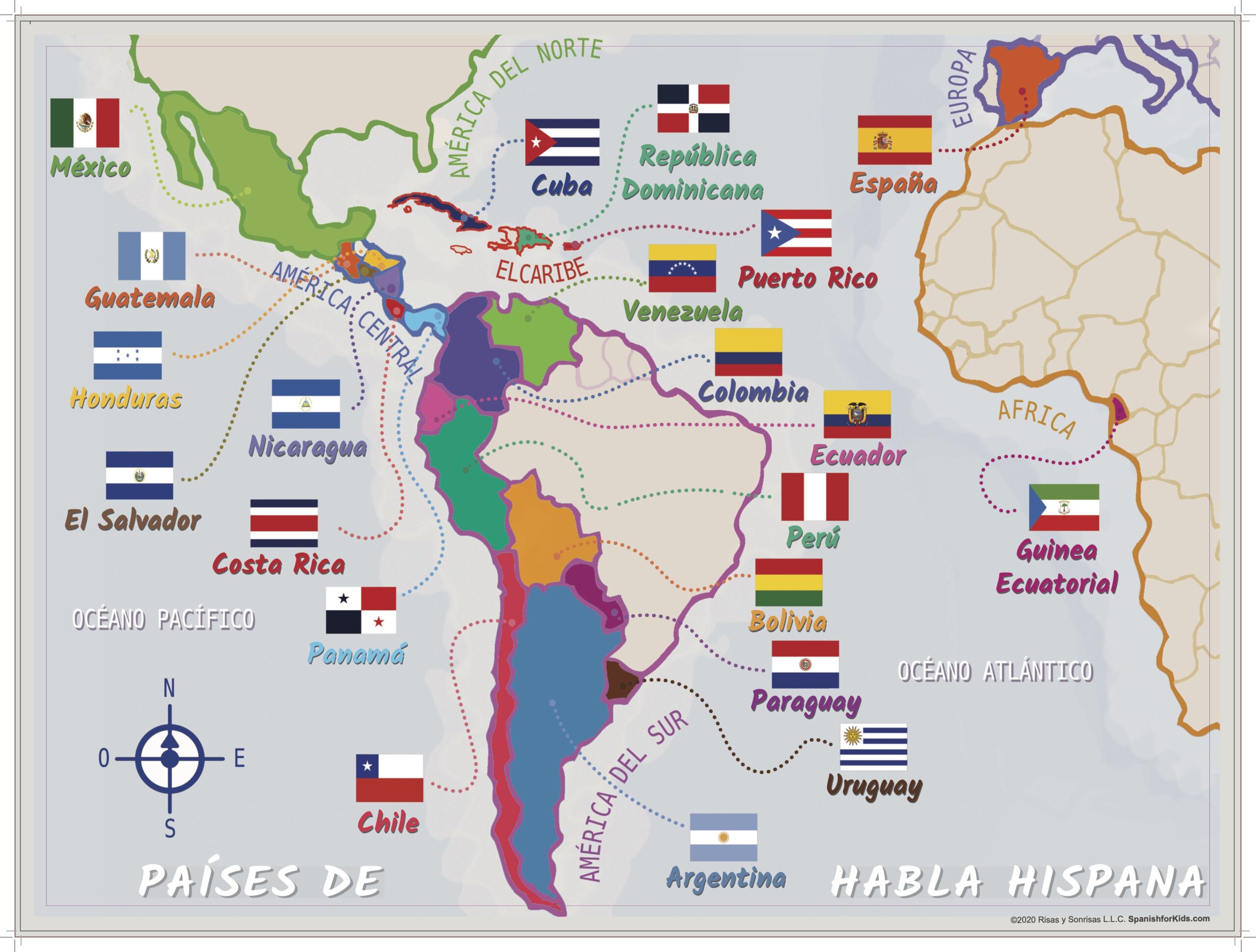Unveil the hidden depths of Spanish, a language brimming with diversity. Journey with us as we delve into the unique characteristics and applications of its regional variations!
Embark on a linguistic adventure—don’t forget your map!
The hidden depths of Spanish: A linguistic journey
Spanish, a language born from the dialects of Latin, has evolved into a global tongue spoken by over 500 million people worldwide. But here’s the thing—Spanish isn’t just “one” language. It’s a dynamic mix of regional varieties, each adding its own flair. While these differences can sometimes pose challenges for communication, they also make the language vibrant and colorful.
Let’s delve into the world of Spanish variants and explore their unique characteristics and applications.

No, it’s not a typo—just another Spanish variant doing its thing.
From Spanish for Kids
The birth and evolution of Spanish
Once upon a time (in the 16th century, to be exact), Spanish began to standardize in the Castile region of Spain. As the language spread across the globe, it adapted to new environments, picking up bits and pieces from the cultures it encountered. The geographical dispersion of Spanish speakers is the primary factor contributing to this linguistic diversity. But keeping these different varieties under one linguistic umbrella? This ongoing struggle has led to the establishment of clear writing norms, aimed at preserving the language’s integrity and facilitating communication across borders.
Fun thought: Would a Spaniard understand a Mexican telenovela without subtitles? Maybe… maybe not!
Who’s the Boss of Spanish?
Enter the Royal Spanish Academy (RAE), the official gatekeepers of the language. It plays a crucial role in developing and updating Spanish orthographic and grammatical rules.
Additionally, treaties between Spanish-speaking countries help coordinate efforts ensuring that the language remains cohesive and solving linguistic issues.
Question of the day: Who decides which words get added to the Spanish dictionary? (Hint: It’s not your abuela, but we wish it was!)
Why Is It Important to Keep Spanish Unified?
Clear writing rules help Spanish speakers from different regions understand each other, no matter what their dialect is. This promotes a sense of unity among the Hispanic world, strengthening its cultural identity and fostering a shared heritage. Plus, having set standards makes learning and teaching Spanish a lot smoother, and it helps ensure we get great books, media, and other cultural content.
The Spanish Standard: A Linguistic Peace Treaty
Despite numerous dialects, there is a consensus on a standard form of Spanish. As linguist Lola Pons says, “There’s a sort of unmarked dialect that everyone gravitates toward…” This is the Spanish you’ll hear in the news, in movies, and in schools—basically, the glue that holds it all together.
What’s Your Flavor of Spanish?
Even within the standard form, you’ve got sub-varieties that cater to specific regions or purposes. They’re like flavors of ice cream—some people prefer the traditional, while others go for something a bit more exotic:
- Latin American Spanish: Used across Latin America, with its own unique twist on vocabulary and slang.
- Iberian Spanish: The classic version spoken in Spain and Portugal, rooted in European tradition.
- United States Spanish: Used by Spanish speakers in the United States and may incorporate elements of English.
- Mexican Spanish: This standard is specific to Mexico and often includes regional variations and indigenous language influences.
- Neutral Spanish: A carefully crafted version meant to be universally understood, especially in technical and formal contexts.

Who knew Spanish came in so many flavors?
Picture by Mary Moore
When to Bust Out the Different Spanish Variants
Now that you know the different versions of Spanish, when should you use each one?
- Neutral Spanish: Great for technical manuals or content that needs to appeal to everyone. Think of it as the “one size fits all” option.
- Regional Standards: Perfect for creative work, marketing, literature, and anything that needs a personal touch. Want your audience to really connect with your message? Go regional!
Pro tip: Avoid Neutral Spanish when you’re trying to sound cool in a TV show. No one wants their edgy dialogue to sound like an instruction manual!
Wrapping It Up: The Colorful World of Spanish
Spanish is a wonderfully diverse language, and understanding its different variants is key to effective communication. While there is a standard form of Spanish used for formal communication, regional variations continue to thrive and add color to the language.
Whether you’re writing a formal document or creating a work of art, knowing when to use a specific version of Spanish can make all the difference. So next time you think there’s just “one” Spanish, remember: there’s a whole world of words out there waiting to be discovered!
Stillman Translations offers a full suite of language services, including translation, localization, and interpretation. Our team of experts can help you navigate the nuances of Spanish dialects, ensuring your message resonates with your target audience, no matter where they’re from. Let us help you unlock the full potential of Spanish!
What’s YOUR favorite flavor of Spanish?
References
https://hablacultura.com/cultura-textos-aprender-espanol/las-variedades-del-espanol/
